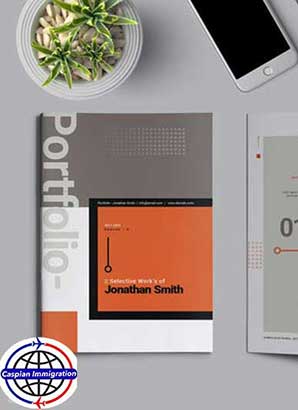What is a portfolio?
A portfolio is a compilation of work samples and professional documentation that provides proof of your accomplishments or samples of your work. It can be a physical book or binder that organizes samples of your work, or an online portfolio with electronic files.
When and why do you use portfolios?
Portfolios are a great way to demonstrate the competencies you would list on a resume or talk about in an interview — they allow you to show and not just tell. During a job search, the portfolio showcases your work to potential employers. It presents evidence of your relevant skills and abilities. Portfolios are also helpful for independent contractors, consultants, or business owners who need to provide work samples to potential clients.
Outside of a job or client search, archiving samples of your work to a portfolio is a great way to keep track of your accomplishments and make note of when you acquired key competencies. Having it all together in a portfolio can be useful during your yearly review or helpful if you decide to go for a promotion. It can take quite a while to put together a portfolio, so make sure it’s up-to-date to prepare you for unexpected situations like layoffs and sudden changes to your job.
What jobs or industries typically use portfolios?
Certain professions typically use portfolios to showcase their work. Artists, interior designers, cake decorators, graphic designers, writers, teachers, architects, and others in visual professions have been documenting their work in portfolios for years. Today, any professional in any industry can and should consider starting a portfolio.
What do you put in a portfolio?
Anything that demonstrates your accomplishments and abilities should go into your portfolio. Think you don’t have anything to put in a portfolio? Think again. What major projects have you worked on recently or over the years? Select some of the deliverables associated with it, and add it to your portfolio.
Here are some items you may be able to include in your portfolio:
Current resume or CV
Diplomas, certificates, and transcripts from post-high school institutions
Reference letters, awards, testimonials, and LinkedIn recommendations
Work samples that you have created, for example:
Curricula
Proposals
Marketing materials
Spreadsheets or reports
PowerPoint presentations
Graphics or layouts
Database infrastructure
Project plans
Evaluations and/or performance appraisals
Published articles and writing samples
Link to blog or sample of blog post
Thank you notes or e-mails from clients or co-workers



